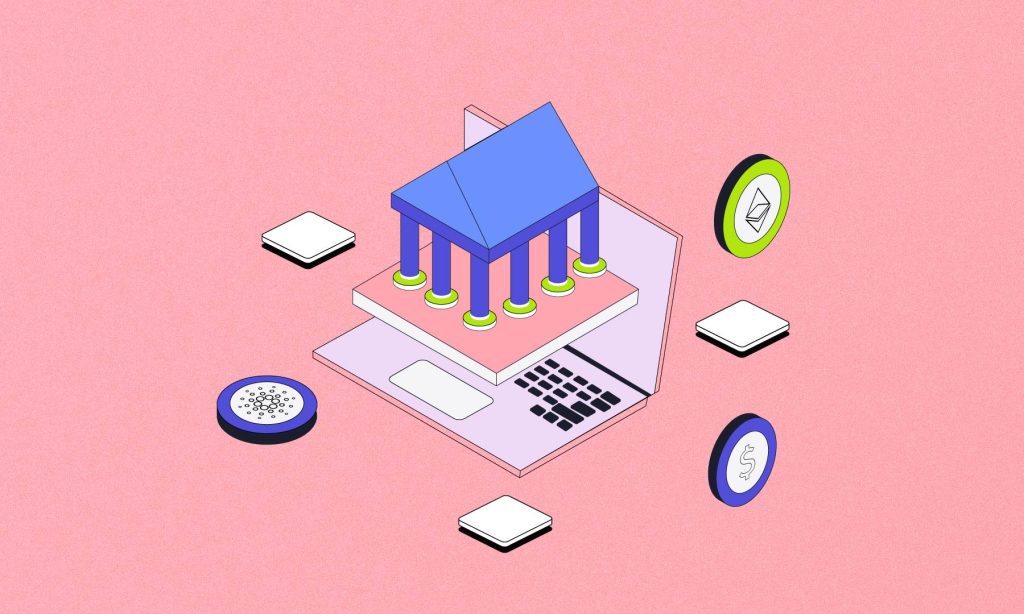Crypto is booming, but as an investor, it’s important to understand the alternatives—CBDCs and stablecoins. These alternatives are digital currencies like crypto, but there are some marked differences. This article will help you differentiate between them and understand the specifics. So What is CBDC?
What is a CBDC?
Cryptos in general are volatile investments. This has a lot to do with the fact that they lack government backing. CBDCs overcome this challenge as central banks back them.
A Central Bank Digital Currency (CBDC) is a central-bank-backed electronic payment method. It can be used to make digital payments and store value for commodities such as gold and oil.
The main aim of CBDCs is to provide businesses and customers with privacy, transferability, convenience, accessibility, and financial security. It also aims to reduce the outlay on the maintenance of standard system requirements and lower transaction costs, especially cross-border costs.
Types of CBDCs
There are two major types of CBDCs:
- Wholesale: Wholesale CBDCs are mainly used by financial institutions. In this type of CBDC, the central bank grants a financial institution an account to deposit funds or use interbank transfers while settling. The use cases of wholesale CBDCs extend to cross-border payments, where its application facilitates fast transactions. With these CBDCs, the speed and safety of transactions are guaranteed, generating economic advantages for all participants.
- Retail: The retail variety of CBDCs are government-backed digital currencies consumers and businesses use. They work by eliminating intermediary risks—the risk that private digital currency issuers might go bankrupt, causing customers to lose their assets.
What is a stablecoin?
A stablecoin is a type of crypto whose price has been stabilized to some extent by pegging it to another currency, such as the US dollar, or a commodity.
Stablecoins serve as a tokenized version of the fiat currency or other assets with a fixed value. Investors often think of stablecoins as a safe bet and use them to diversify their portfolios. Finance platforms use stablecoins to lend crypto to their clients. Investors often consider stablecoins to avoid paying a transaction fee on their exchange.
Types of stablecoins
There are four types of stablecoins. They vary based on the algorithm used to maintain stability.
- Traditional collateral (off-chain) stablecoins: This stablecoin is backed by a fiat currency that remains in reserve with central authorities.
- Crypto collateral (on-chain) stablecoins: As the name suggests, this kind of coin is backed by another cryptocurrency. Individuals who wish to purchase this kind of stablecoin need to lock their crypto into a smart contract. After this procedure, they will receive stablecoin tokens equivalent to the crypto locked away.
- Algorithmic stablecoins: These are stablecoins that depend on specialized smart algorithms and contracts to acquire price stability. The algorithms manage the token supply in circulation.
- Commodity-backed stablecoins: With this type of stablecoin, the collateral used is physical assets such as gold, oil, and real estate.
Differences between CBDCs vs stablecoins
Stablecoins and CBDCs are both digital currencies, but there are some points of difference.
| Stablecoins | CBDCs | |
| Utility | Stablecoin is a form of private money used to effectively bridge the gap between fiat currencies and cryptos. | A CBDC is an alternative to hard cash. |
| Aim | Stablecoins aim to lend stability to the crypto market space. | CBDCs strive to make the country-specific banking setup more widespread and limit unregulated currencies. |
| Regulation | With stablecoins, there is no regulatory body. | The central bank and the country’s local government regulate CBDCs. |
| Adoption | Stablecoins have a moderate chance of adoption. | CBDCs have a higher chance of adoption compared to stablecoins. |
| Exchange value | Stablecoins have nil exchange value. | CBDCs have complete exchange rate control. |
| Nature of money | Stablecoins are privately funded. | The government funds CBDCs. |
| Taxation | Stablecoins have no taxation curbs. | Standard taxation policies apply to CBDCs. |
How will CBDCs and stablecoins impact the crypto market?
Stablecoins minimize crypto volatility by maintaining collateral in the form of reserves that are often in the form of US dollars. Market volatility is a turn-off and stablecoins remedy that, thus helping to attract more investors and broaden the crypto space. As blockchain-based tokens, stablecoins also allow fast transactions at a lower cost. Another great boost for crypto adoption.
Will CBDC replace Crypto? – It might not even Affect the Market!
Digitizing the current financial system makes investing simpler. CBDCs too will strengthen the crypto market. Greater efficiency and improved transaction payment mean CBDCs might stand a chance in the crypto market. But for this to happen, CBDC needs to be widely and easily accessible. However, CBDC being a digital currency, might not significantly affect the crypto market.
FAQs
How will CBDC affect cryptocurrency?
Reduced Demand: CBDCs may reduce demand for existing cryptocurrencies as they provide a government-backed digital alternative.
Regulatory Impact: Increased regulation surrounding CBDCs could influence the regulatory environment for cryptocurrencies.
How does CBDC affect the stock market?
Volatility Impact: CBDC indices have shown a negative relationship with volatility in stock markets.
Market Stability: CBDCs may contribute to increased stability in stock markets due to their regulatory oversight and government backing.
Can CBDCs and stablecoins coexist?
Possible Coexistence: CBDCs and stablecoins can coexist, but there may be challenges related to regulatory concerns and competition.
Complementary Roles: CBDCs may serve as a stable foundation for financial systems, while stablecoins can offer additional utility and flexibility for specific use cases.
What will be the impact of cryptocurrency?
Financial Revolution: Cryptocurrency adoption could lead to a fundamental shift in financial systems, offering greater decentralization and financial inclusion.
Regulatory Challenges: Increased adoption may prompt regulatory scrutiny and the development of frameworks to address potential risks and ensure consumer protection.








